Tracing The Evolution Of The Jhumka
While their origins can be traced back to centuries-old temple jewellery, these timeless earrings continue to enjoy popularity in contemporary Indian culture with natural diamond and gemstone variants.
Illustrations By Shawn D’souza
|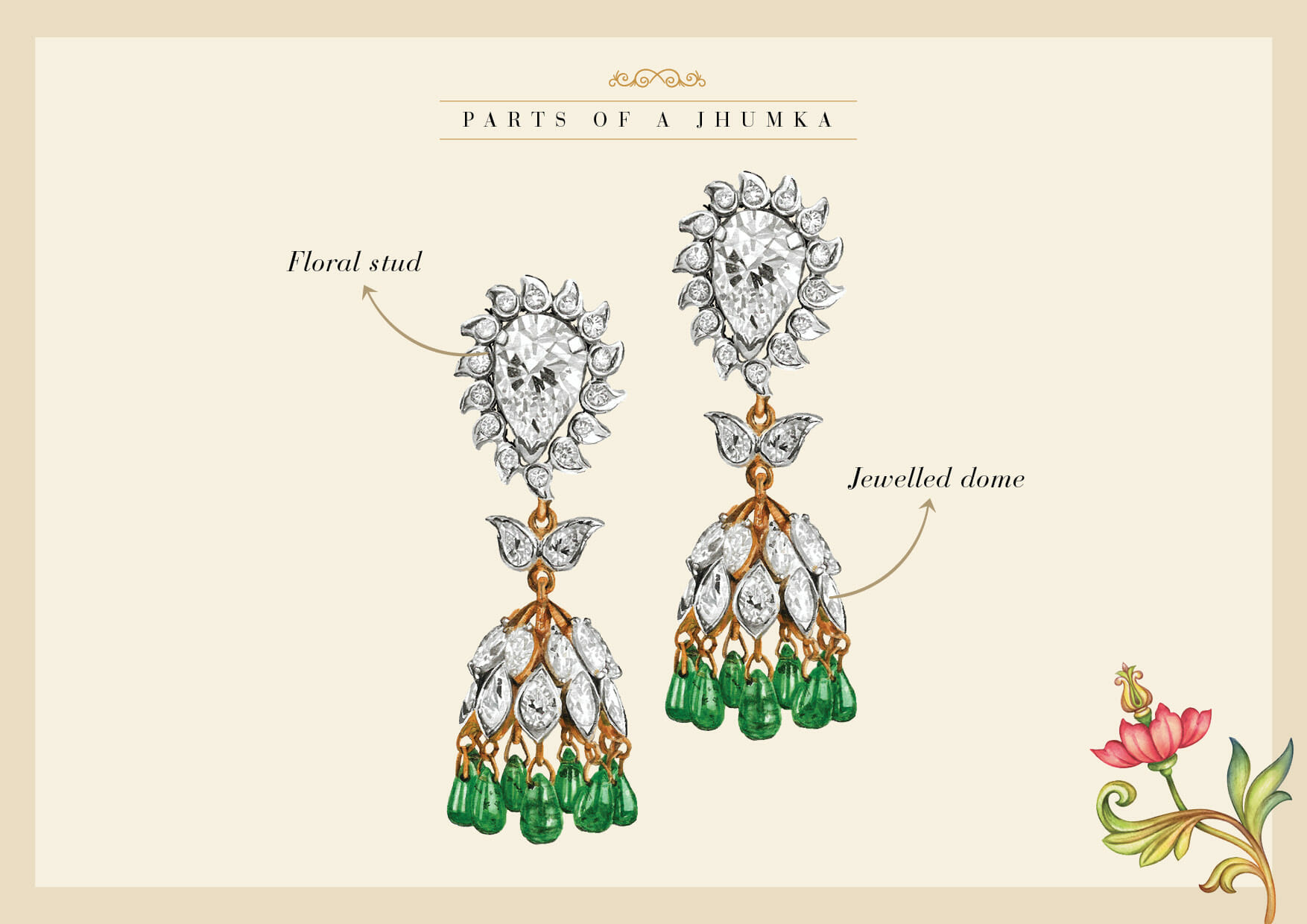
The word ‘jhumka’ instantly evokes a picture of movement and fluidity. The name of this traditional bell-shaped earring, is after all, an onomatopoeia — meant to reflect the distinctive jingle that its suspended beads and adornments make with every turn of the head. The word translates to ‘bell’ or ‘bowl’, fittingly named after the silhouette’s most significant feature.
Today, jhumka earrings are likely to be a staple of one’s festive and wedding season wardrobe. Its timelessness adds a traditional update to any given look, while its versatility allows for pairing with contemporary occasionwear too. The best of both worlds, if you may. You can also call it a marriage of something old and something new. Because as it turns out, the origin of this popular earring style can be traced back to ancient temple statues from the Chola dynasty (which make them as old as 300s BCE). According to second-generation jeweller Fleur Van Gelder, whose label Van Gelder Indian Jewellery has been researching Indian heritage jewellery since the 1980s, deities were adorned with typical temple jewellery as a tribute. “A consequence of this, traditional temple dancers started wearing the same type of jewels as well.”
“The origin of this popular earring style can be traced back to ancient temple statues from the Chola dynasty (which make them as old as 300s BCE).”
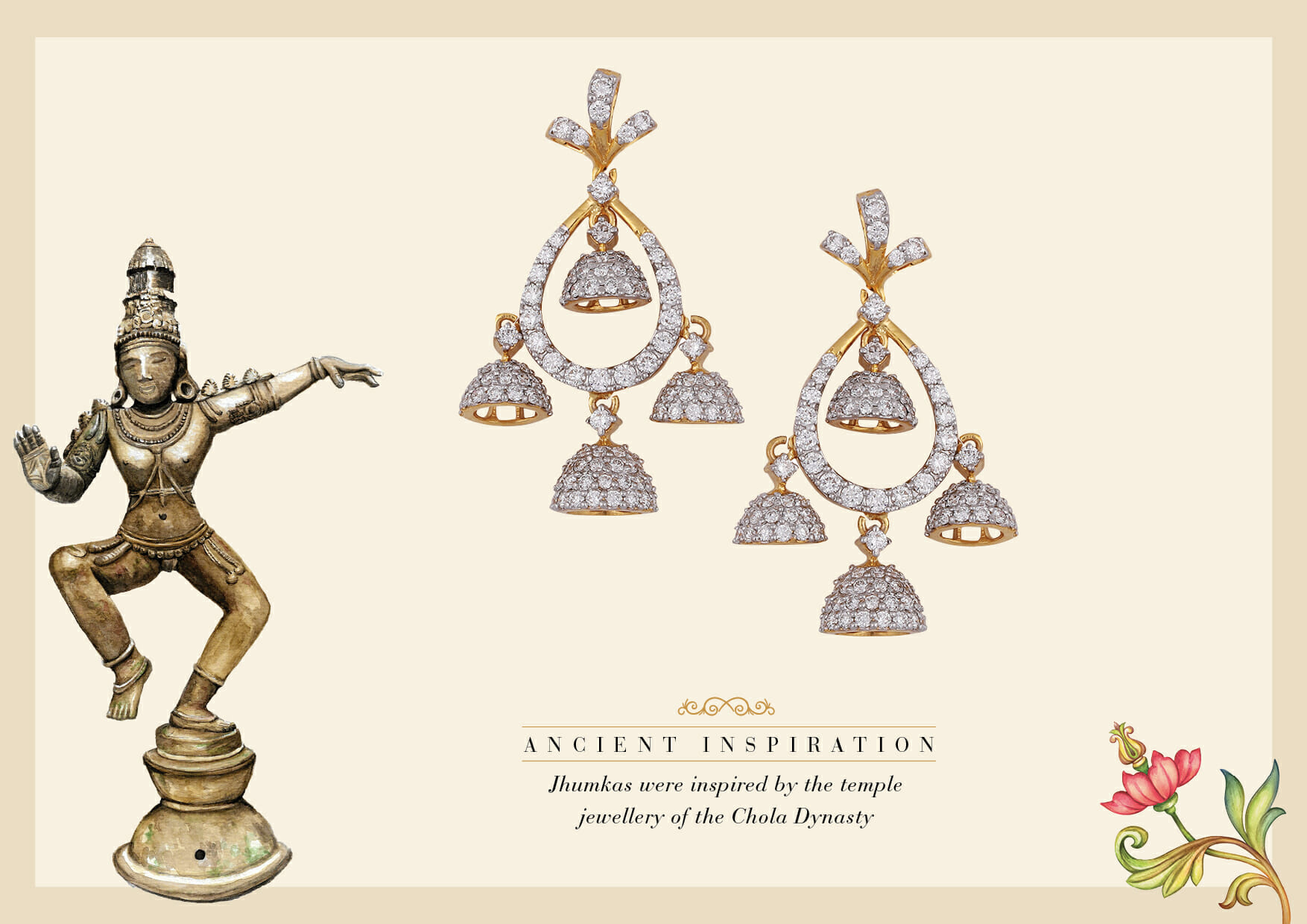
Nitin Gilara, partner and the driving creative spirit at Jaipur-based heritage jewellery brand Rambhajo’s, explains that it was the patronage of Bharatnatyam dancers that brought the jhumka earrings into the spotlight in contemporary times too.
“The dance form is all about facial expressions and neck movements. Jhumka earrings move fluidly with the dancer, creating a very captivating impact.”
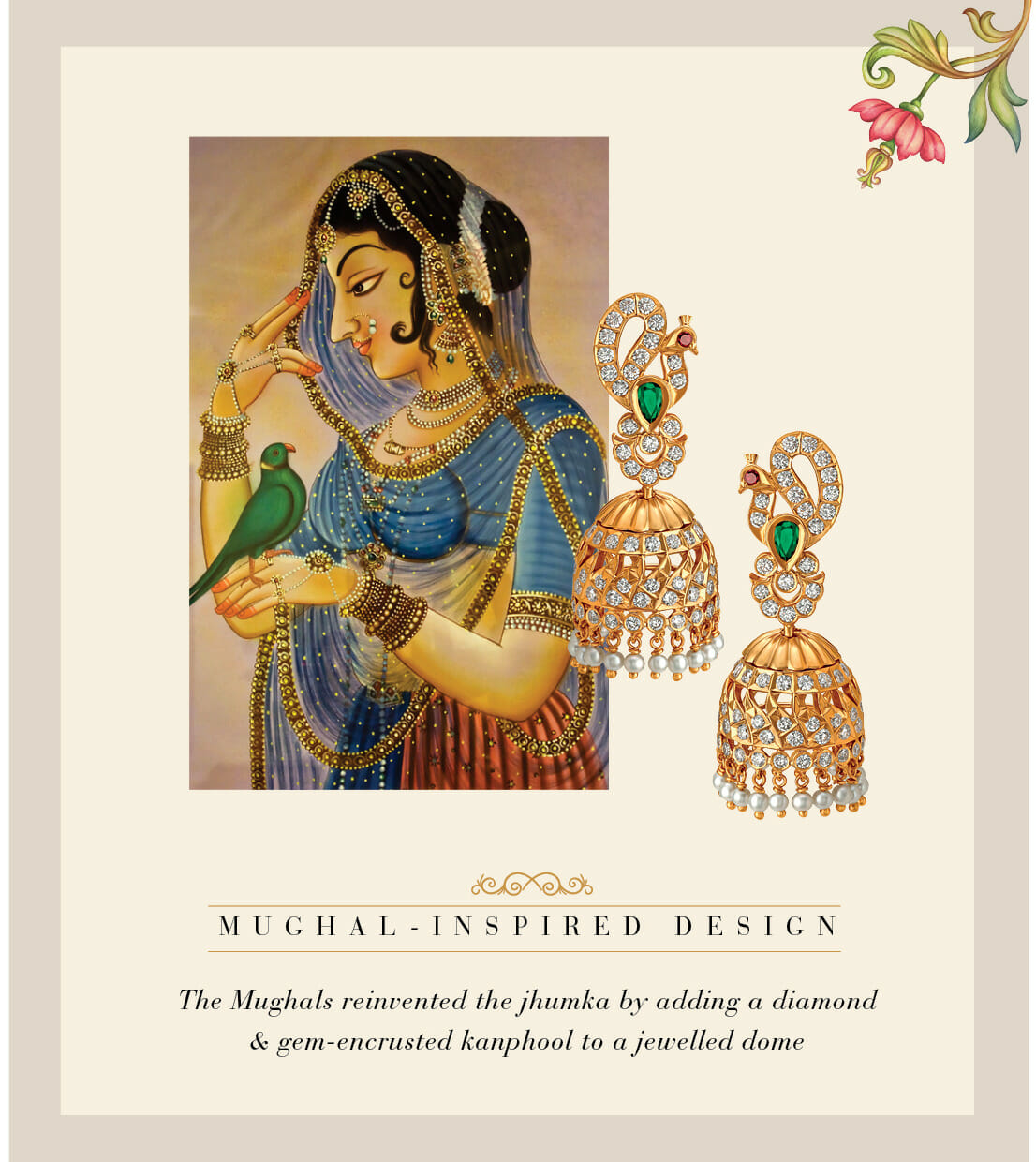
The Jhumka’s Mughal Makeover
Following its origin in South India, jhumka earrings gained nationwide acceptance, especially from royal families — but each adapted the bell shape to create their own signature style. As Gilara explains, erstwhile queens were expected to be adorned in heavy jewellery— think the entire gamut of necklace, maang tikka, earrings and bangles in polished or uncut diamonds— through the day. The jhumka, as a result of being hollow from inside, was light compared to its other counterparts. So while it promised a dressy impact, it was also seamless to wear.
“Following its origin in South India, the jhumka gained nationwide acceptance, especially from royal families — but each adapted the bell shape to create their own signature style.”
Jewellery designer Noelle Van Gelder explains how it was the Mughals who married the kanphool (ear flower) or karnaphool— a statement stud featuring pearls, uncut diamonds and precious gemstones. This was often worn with an ornamental chain called sankali, that ran up into the hair where it was fixed with a small hook — with the jhumka dome as we know it today. Rani Archana Kumari Singh of Badnore, Rajasthan adds that Mughal jhumka earrings were originally bell-shaped with long tassels of pearls hangings, set alongside uncut diamonds in gold. “It was worn on the ear with just a hook. Later they combined the dome with the karnaphool to give the jhumka its present-day adaptation.”

The Jhumka’s Modern-Day Turn
Singh also attributes international fine jewellery brand Cartier in modernising the jhumka earring’s design. “The brand studied the lifestyles and dressing of families such as ours, to design complementing jewellery. At the time, even though ear studs were popular, they remained hidden as custom called for women to cover their heads with dupattas,” she explains. “So Cartier directed the trend towards more sizeable earrings — they picked up the jhumka and restyled it with a more western nod.” As the former editor of Gems & Jewellery magazine as well as a bespoke jewellery designer, the aesthete possesses versatile jhumkas in her personal collection of royal jewels as well. She created layered natural diamond jhumka earrings with round brilliant cuts, set in white gold; that was inspired by a mutual-cut diamond piece she had previously bookmarked. Another standout piece features a delicate string of baguettes leading into a dainty dome of baguettes and spinels, made to match a ’60s inspired diamond and spinel choker. To complement her sapphire bead necklace that is studded with an iconic Golconda diamond and round brilliant cuts, she designed jhumka earrings with a full-cut natural diamond top, leading into a sapphire jhalar (tassels).
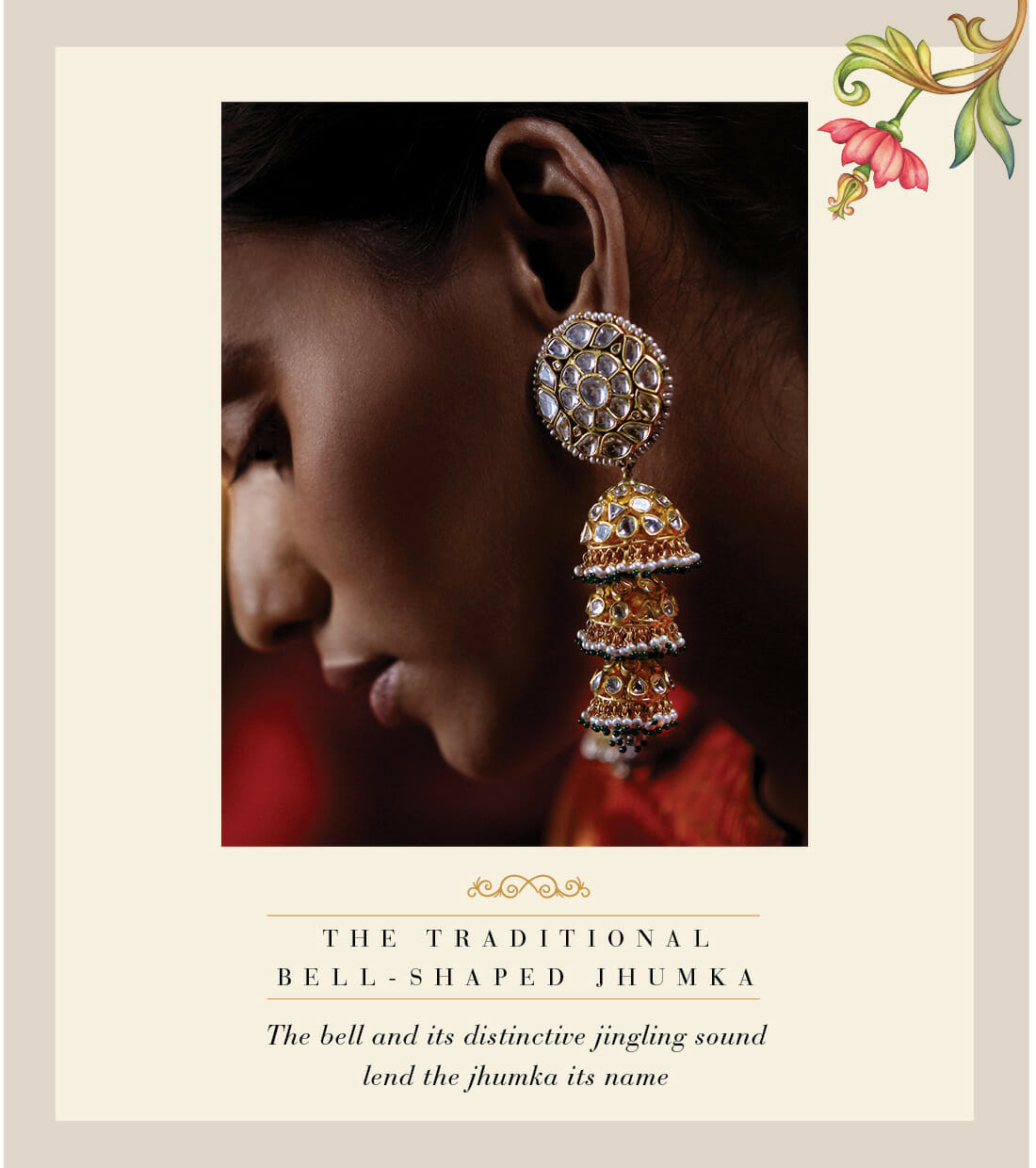
The true test of a design’s longevity is the ease with which it can lend itself to the current sensibility. An account the jhumka clearly doesn’t fall short on. Gilara, while largely creating flat-cut diamond jhumka earrings, feels that when they are to be recreated with natural diamonds, it’s best to play around with shapes. “Blending marquise, princess- and round-cut diamonds will create a unique sparkle when light hits all their different facets; bringing alive the jhumka earring’s 3D personality.” Harakh Mehta, who was the official Haute Joaillerie for Le Bal, Paris in 2019 believes in treating this homegrown design with global appeal. The label’s sought-after variation of the traditional jhumka earring design is their Cascade dangling earrings —a half-domed piece set with brilliant-cut pavé real diamonds, complete with several rows of swaying rose-cut natural diamonds. “We have used a combination of brilliant and rose cuts — pear and round diamonds — to create the flowing cascading effect.”
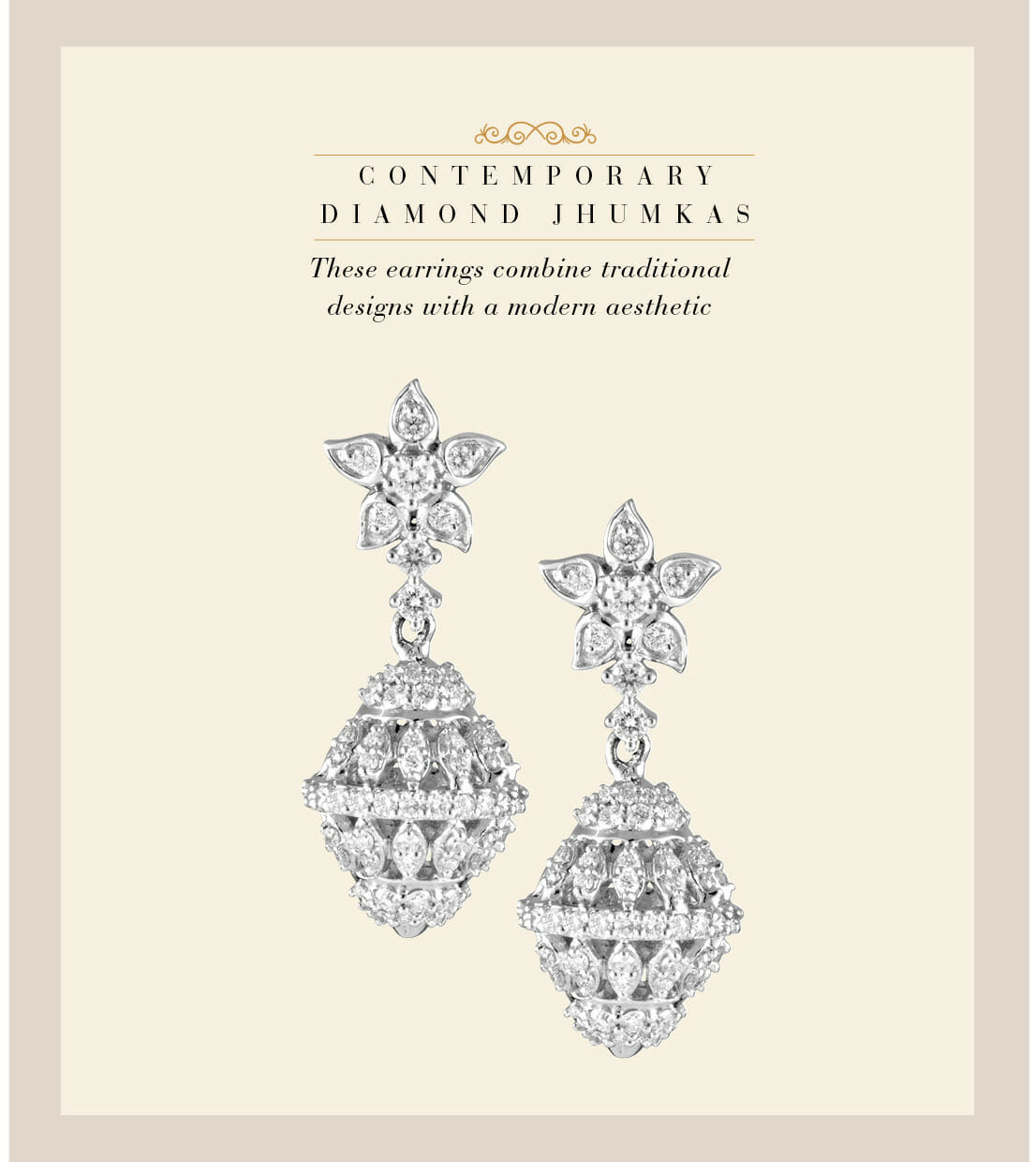
Mehta believes it is the eclectic charm of jhumka earrings that makes it so relevant even today — Indian in essence, but also providing ample creative freedom to enhance it with unconventional contemporary elements. In a way, it serves as a bejewelled blank canvas that one can make their own. This was evident in the way different regions across the country adapted it to suit their respective cultures back in the day. And now, it is evident in the way the jhumka has been given a more worldly makeover to match the wearer’s lifestyle. While it has retained its original aesthetic, it has also evolved to adapt to the times — by fusing together time-honoured and cultural elements, but with a unique twist.
